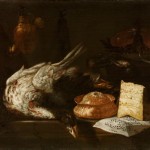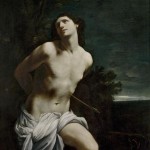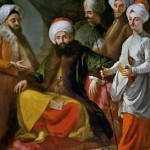
John Weretka on a musical mystery in a painting by Master S.B. in the Museo del Prado Masterpieces exhibition at the NGV Amigoni’s group portrait of Farinelli, Teresea Castellini, Metastasio and Amigoni himself and Master S.B.’s Kitchen still life are both currently on display in the Museo del Prado exhibition at the National Gallery of Victoria. Music features reasonably often in paintings and other art works and, as someone who works between musicology and art history, my eye is often drawn to these kinds of representations. Artists often take real care with the depiction of music. One of the most startling examples of this is the magnificently detailed Annunciation to the Shepherds (1587) by Jan Sadeler I (1550-1660) (fig. 1). Conforming to the normal tropes of the Annunciation type, it shows a choir of nine angels who hold the parts…


